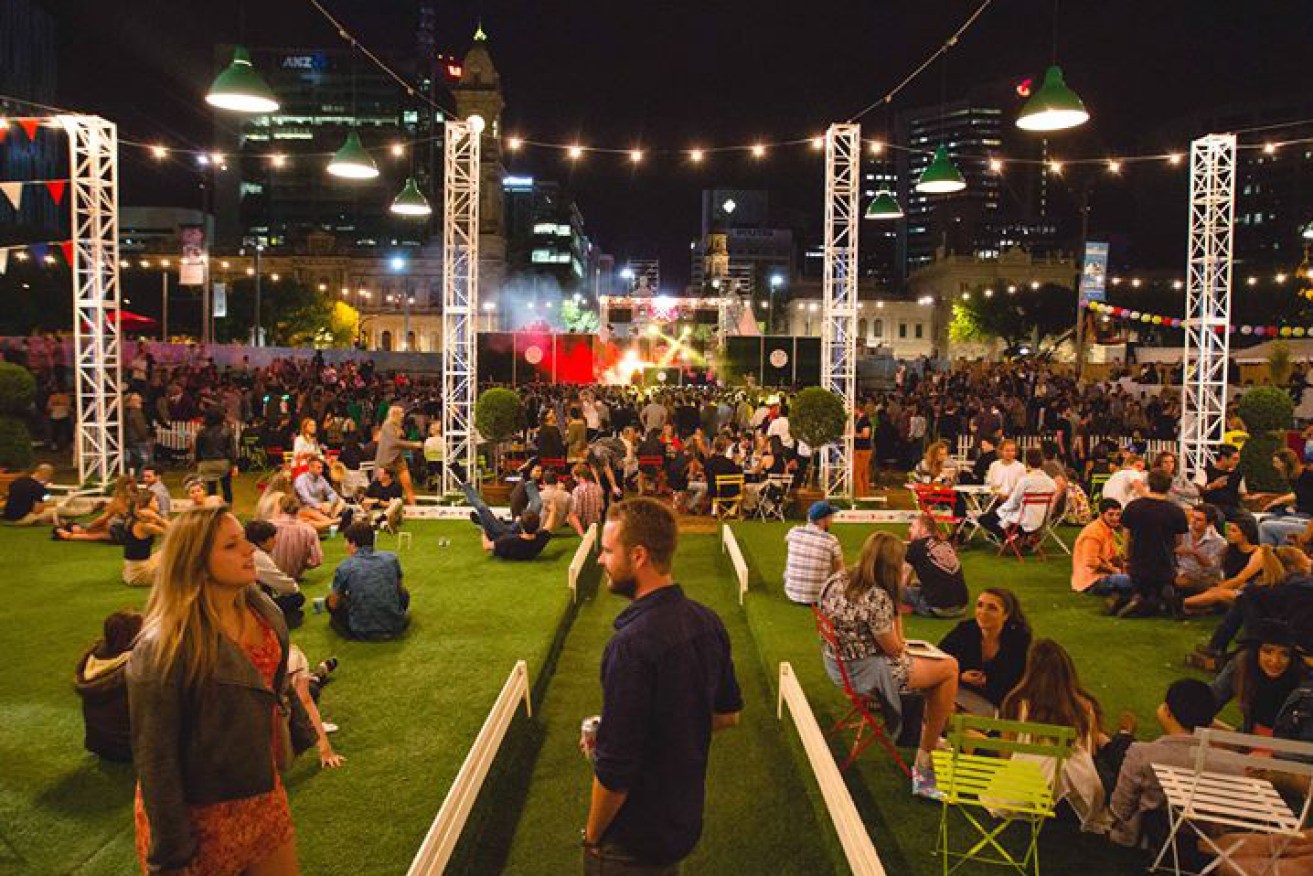It’s time to think inside the city square
Adelaide’s city squares aren’t just for decoration – and it’s time we put them all to better use, writes architect Gerald Matthews.

The Royal Croquet Club will return next year - but will be at Pinky Flat.
Over the past few decades festivals have undoubtedly transformed Adelaide and have taught us how to better use our public spaces.
But there’s still room for improvement, with Victoria Square the only one of five CBD squares frequently transformed for events such as Tasting Australia, which opens its Town Square there this week.
When I was young, the Adelaide Festival happened only every four years, and the years it occurred stand out in my mind as different.
With an increased frequency of festivals, it’s harder to feel the resting pulse of the city and therefore difficult to measure how the festivals have really changed it. But to me it’s clear that they have; and for the better.
In Adelaide, our festivals often point out forgotten parts of our cities. They help us rediscover and reimagine.
In 1996, I worked at the Fringe Festival while I was studying. The hub was located on a vacant site behind the Exeter Hotel just off Rundle Street. For a month, this was a hive of activity. It was like Adelaide had discovered a lost part of itself that had been hidden away.
Soon after, the site was redeveloped as an apartment building, making a more permanent contribution to the area, so the Fringe hub moved for the next festival without missing a beat.
As a designer working in Adelaide I spend time thinking about our public spaces. What are they for? Are they decoration? Are they about recreation? Are they just to keep the private spaces from touching each other, or just the common area that lets us move between private realms?
I’m sure most people would agree that they’re much more than any of those.
I think they have something to do with holding the private realms together. Our public places are the glue that makes us a society and they are the places where we best express what that means to us.
They aren’t just for decoration. I believe their use is important. We use them to express our joy and our anger; we use them in celebration and in protest. It’s all about shared experiences and values.
When the Royal Croquet Club first arrived in Victoria Square for the Adelaide Fringe, it proved something to us about our city. It proved that we want to use our squares. It also demonstrated the potential of our squares.
I hope that some day the five squares of the city will each host a different aspect of the same festival. Let’s take Adelaide Fringe: I imagine the Fringe hub in Victoria Square with the Garden of Unearthly Delights in Hindmarsh Square, Gluttony in Light Square, and new festival nodes quietly nestled in to Hurtle and Whitmore squares. To make this possible, for a festival to be truly woven into the fabric of our city, we must allow our spaces to evolve to welcome them.
But some people may ask: Can our city cope with more activity and more regular influxes of people?
Well, I work in the city so I’m fortunate to spend a lot of time in the CBD, but most Adelaideans don’t work in the CBD and therefore rarely set foot in the city square mile. But as Mad March proves, events successfully entice a lot of people into the heart of city.
The opening weekend of the Adelaide Fringe alone resulted in an enormous density of people in the city at one time. And the city handled it easily. More than that, it thrived. This is the power of activity and density.
A quiet place to get away from the “hustle and bustle” is never far away. I’m not worried that the city will become too crowded. I am worried that we’ll keep sprawling until nothing binds us together as a single city any more.
I would rather see a CBD criss-crossed with bumper-to-bumper trams and retain our scenic hills and wine regions. This would be better than preserving our “small-town” heart wrapped in an endless sprawl of half-empty houses.
Dense cities are better for the environment. Dense cities are more vibrant. Like every other town or city on the planet, density is increased when population increases and area doesn’t.
So how can Adelaide create density?
We’re certainly not going to start bulldozing suburbs and forcing everyone in around the campfire. At some point we will need to draw a hard edge to the suburban city limits and preserve the farmland beyond. As long as farmland continues to be turned into suburbs, we will continue to effectively expand the surface area of the city, even while our population contracts.
But even if we stop sprawling now I fear that we might be another 50 years away from really growing into the current expanse of our metropolitan area. The key to increasing density is partly limiting the edges but it’s also about making people gravitate towards the centre.
So what brings people to the centre? Put simply, it’s other people. Businesses go where the people are and people go where the businesses are. It’s a mutual agreement (like a social contract) that by clustering together we will improve the outcome for each other.
When it comes to having public places and assets being worn out by their use, we should be grateful for such problems.
Gerald Matthews is managing director of Matthews Architects.




